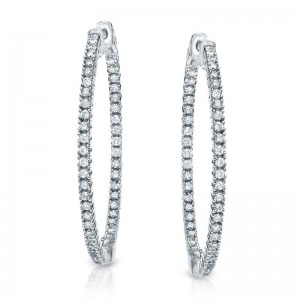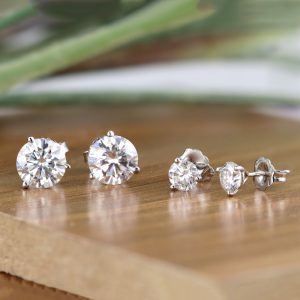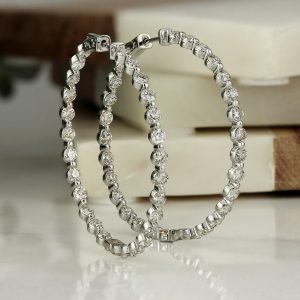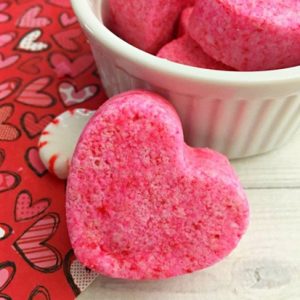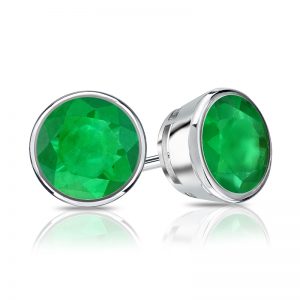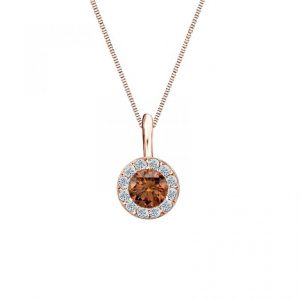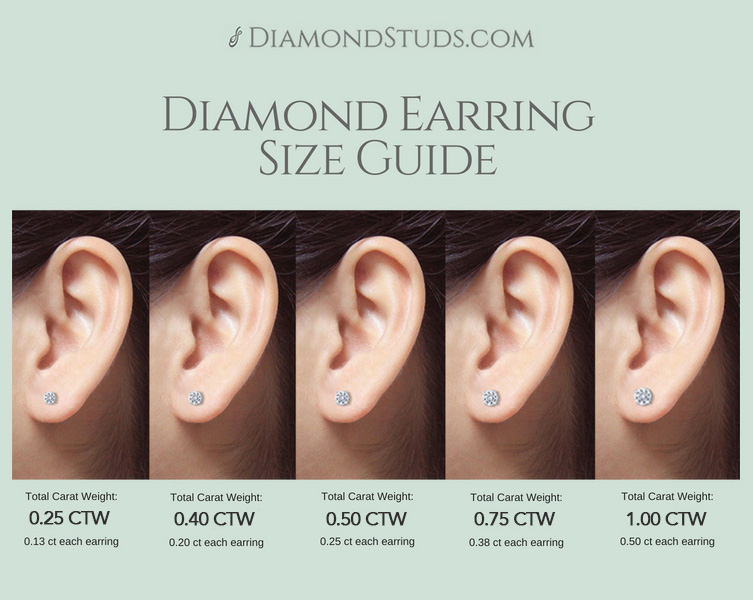
Our customers often ask us, “what size of diamond studs should I get?” or “what’s the best size for diamond studs?” While we don’t believe there’s a “best size” for diamond studs, there’s probably a best size for you, which will vary depending on your style, your budget, and how important certain diamond qualities are to you.
To help you discover which diamond size is right for you, we’ve created our guide to diamond stud sizing and this companion blog post, in which we’ll go in depth on this topic. In this post, we’ll cover how diamond carat affects size, what you need to know about budgeting, what you should consider about diamond quality, how shape affects size, and how earring settings can affect size.
Understanding How Carat Affects Size
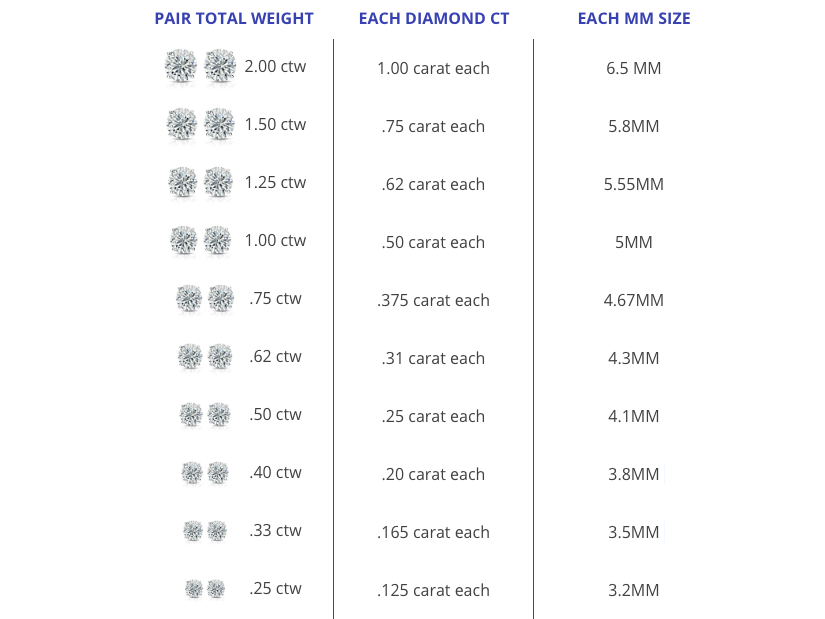
While many people think that diamond carat is a synonym for diamond size, carat is actually a weight measurement. However, carat does have a large impact on the size of a diamond, as the more a diamond weighs, the larger it will be. If you’re unsure how big a diamond may be per carat, take a look at the chart above, which can give you an idea of how large (in millimeters) different round diamonds are per carat weight.
Carat Weight, Size, and “CTW”
Another thing you should understand about carat weight and diamond studs is what the abbreviation “ctw” means. Why is this important? Usually, the carat weight of diamond studs has “ctw” next to it. And if you don’t know what ctw means, you may end up accidentally buying studs in the wrong size.
Ctw is an abbreviation for “carat (total weight),” which means that the carat weight listed is the total carat weight of the studs. For example, if a pair of studs has a 1.0 ctw, each diamond used in the studs will be 0.5 carats in weight. So if you want diamonds of a certain carat weight per earring, make sure the earring’s “ctw” is double that.
Setting a Budget
Diamond studs vary widely in price. And while both carat weight and diamond quality affects the price of diamond studs, carat has a larger impact on pricing. Higher carat diamonds (which are larger) are very rare, which simply makes them more expensive.
So when you shop for diamond studs, it’s important to set a budget so you’ll know what carat weights are within that budget. After you know what carat weights are within your budget, you can browse within your budget and consider diamond quality, which we’ll talk about in detail in our next section.
Understanding Quality and Diamond Size
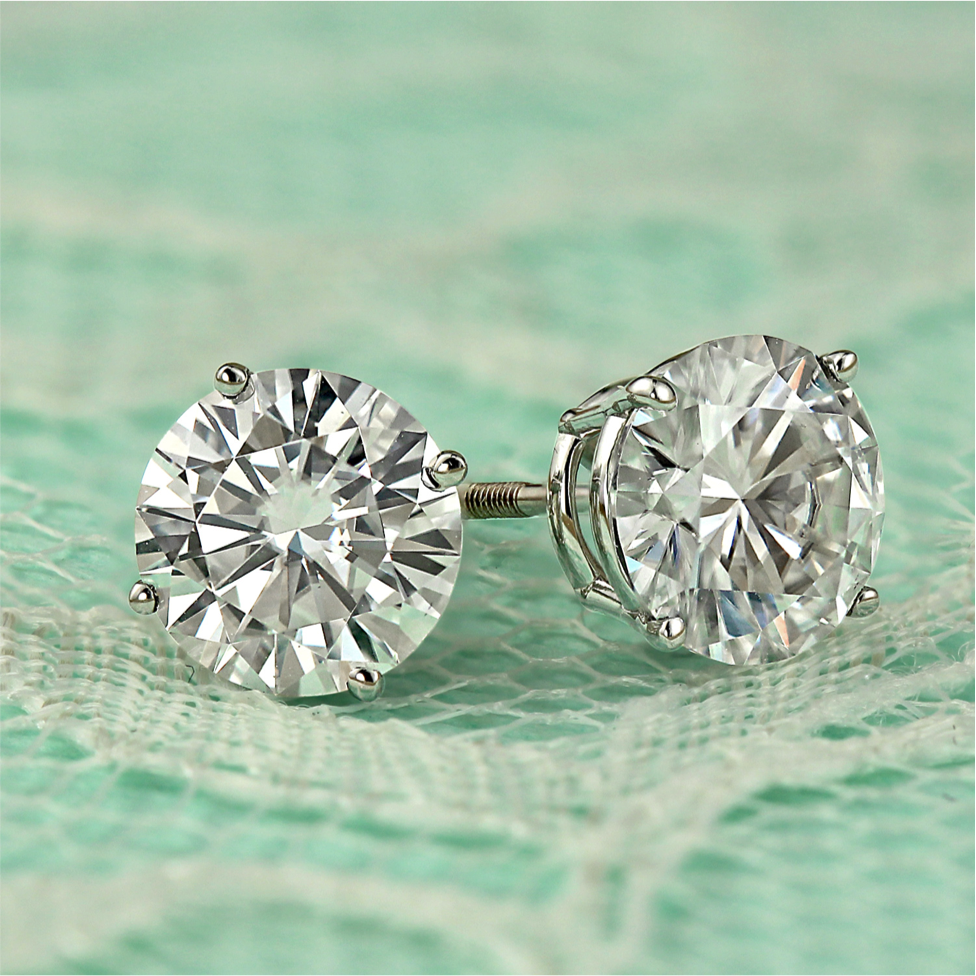
Is a bigger diamond always a more beautiful diamond? In short, we’d say not necessarily. But let’s talk about why.
You’ve probably heard of the 4Cs (diamond color, cut, clarity, and carat), which grade the different qualities of diamonds. Carat weight affects the size of a diamond, which can affect how beautiful it looks to you. But the other three of the 4Cs (color, cut, and clarity) are also very important to the beauty of a diamond. Diamonds with better color gradings are more colorless (and look more “white”), diamonds with better cut gradings will be more brilliant (and will reflect light better), and diamonds with better clarity gradings will have fewer flaws.
You don’t have to buy diamonds with the highest gradings to get beautiful diamonds. But it is important to understand diamond qualities so you can decide what’s important to you when buying a diamond. And you will probably want to avoid diamonds of poor quality, which can look dull, very yellow, or noticeably flawed (we do not carry diamonds below good cut, I color, or clarity I2 for this reason).
If you browse our diamond stud page, you’ll see that we sort diamond quality into three categories: good, very good, and excellent.
Good: Color I-J, Clarity I1-I2, Good CutV
Very Good: Color H-I, Clarity SI1-SI2, Very Good Cut
Excellent: Color G-H, Clarity VS1-VS2, Excellent Cut
We do not carry diamonds that fall below our standards for good quality. However, we do offer a range of good to excellent quality diamonds to allow our customers to decide for themselves what they consider the most important. If higher quality is more important to you, you may want to consider choosing lower ctw diamonds of a higher quality for your diamond studs. But if size is the most important quality to you, you may be very happy going with studs in the “good” quality range with the highest ctw within your budget.
Shapes Affect Style and Size
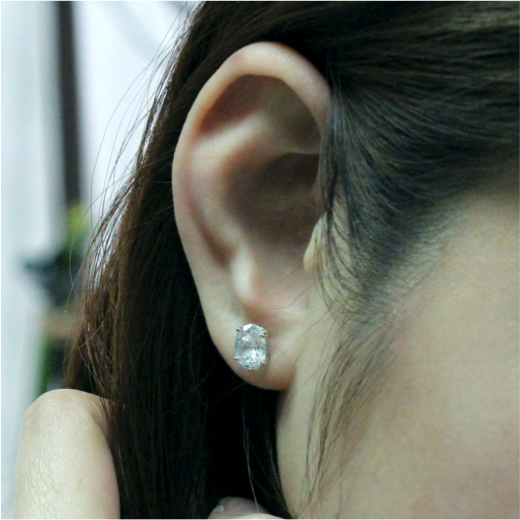
Shape has a big effect on the style of diamond studs— but did you know that can also affect size?
Round is the most popular diamond shape , thanks to the shape’s classic look and high brilliance (meaning, shimmer). But round diamonds actually look a bit smaller per carat than many other diamond shapes, which is something you may want to consider if you want to maximize the size of your studs.
Wondering why round diamonds look slightly smaller than some other diamond shapes? It’s all comes down to table surface area. Different diamond shapes have more of their surface area on their table (their top). So, when viewed from above (as they would be in diamond studs), these shapes will look a bit bigger.
The diamond shapes that look the largest per carat are marquise, pear, oval, and emerald. Out of these shapes, oval diamonds are the most popular for diamond studs, as they maximize size while still having a highly classic look.
Of course, if you want classic round diamonds or another shape that looks a bit smaller per carat (such as asscher cut diamonds), you can certainly still choose them for your studs! What’s most important is that you love the look of your studs. Just know that choosing marquise, pear, oval, or emerald diamonds for your studs can help you maximize size.
Choosing a Setting
As with shape, your choice of setting for your diamond studs will have a big impact on their style. But, also like shape, your choice of setting can also affect how large your studs look. There’s no setting that will make your diamonds look smaller but there is one that will make them look bigger: the halo setting.
Halo settings boost your studs’ brilliance and give the illusion that your center diamonds are larger than they actually are. So if you want to use your settings to maximize the size of your studs, halo style settings are an excellent choice.







 1-855-969-7883
1-855-969-7883 info@diamondstuds.com
info@diamondstuds.com



